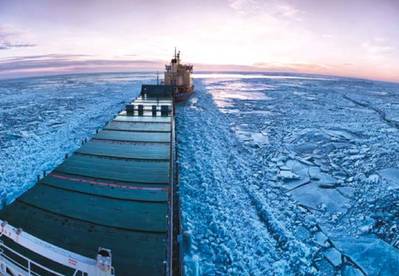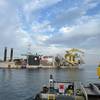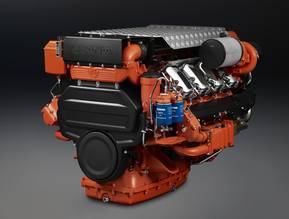GAO: Limited Commercial Arctic Development Foreseen
Decreasing seasonal sea ice has opened up Arctic waters for longer periods with resulting potential economic opportunities in commercial shipping, cruises, commercial fishing, oil, and mining. In light of the importance of U.S. efforts to effectively manage Arctic issues, GAO was asked to examine U.S. actions related to developing and investing in Arctic maritime infrastructure, which it did without making any recommendations.
The Committee on the Marine Transportation System (CMTS) had earlier prioritized two broad categories to be addressed in the near term: information infrastructure, such as mapping and charting, and response services, such as search and rescue. Implementation of those actions is at the discretion of each federal agency.
This report discusses:
(1) current commercial maritime activity in the U.S. Arctic and anticipated activity in the next 10 years,
(2) actions taken by government entities in support of planning and developing U.S. Arctic maritime infrastructure, and
(3) federal interagency efforts to identify and prioritize Arctic maritime-infrastructure investments.
GAO interviewed representatives from the commercial-shipping, cruise, commercial-fishing, oil, and mining industries and government entities involved in the U.S. Arctic.
Site visits were conducted to Nome, Barrow, and Anchorage, Alaska. These sites were selected based on factors such as geographic location and infrastructure activity.
Report findings
Commercial U.S. Arctic maritime activities are expected to be limited for the next 10 years, according to industry representatives, due to a variety of factors. Interviews with industry representatives highlighted a variety of general challenges related to operating in the Arctic, such as geography, extreme weather, and hard-to-predict ice floes.
Industry-specific factors were also cited as contributing to limited commercial activity. For example, shipping companies noted higher costs with Arctic transit; cruise industry groups noted a lack of demand for Arctic cruises from the mainstream cruise-consumer base, and oil companies last drilled offshore exploratory wells in the U.S. Arctic in 2012.
Although the activity will likely be limited, federal, state, and local stakeholders have taken some actions to plan for future maritime-infrastructure investments. Some of these actions address factors that, as identified by industry representatives, contribute to the current and expected limited maritime activity in the U.S. Arctic.
For example, the U.S. Army Corps of Engineers (USACE), in collaboration with the State of Alaska, has taken steps to study the development of an Arctic deepwater port; the lack of which is a factor identified by mining representatives as contributing to the expected limited mining activity in the U.S. Arctic.
The U.S. Coast Guard (USCG) is in the preliminary phase of seeking to acquire a new polar icebreaker, which could be used for emergency response, research assistance, or patrols.
The National Oceanic and Atmospheric Administration (NOAA) and the Alaska government are working to improve mapping, charting, and weather information for the U.S. Arctic.
GAO Recommendations
GAO states it is not making recommendations in this report. USCG, NOAA, the Department of Transportation, and the Department of the Interior sent GAO technical comments on this report, which were incorporated as appropriate. USACE did not have any comments on this report.












